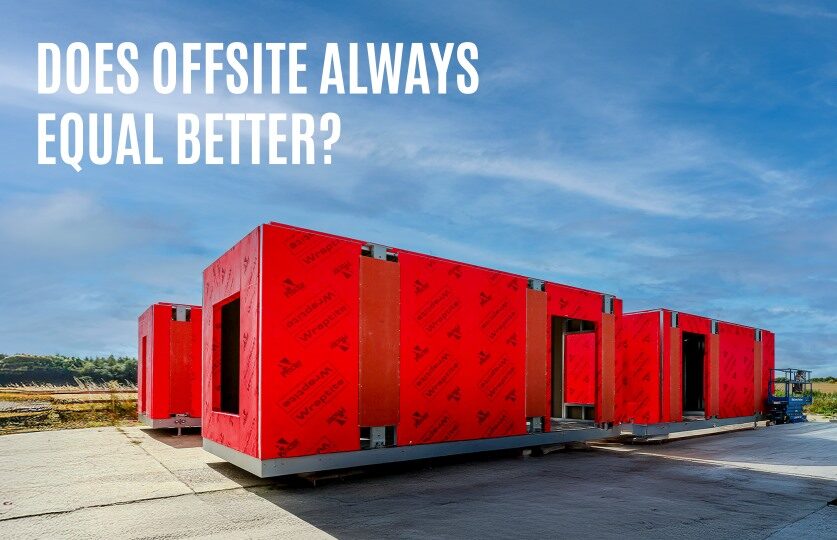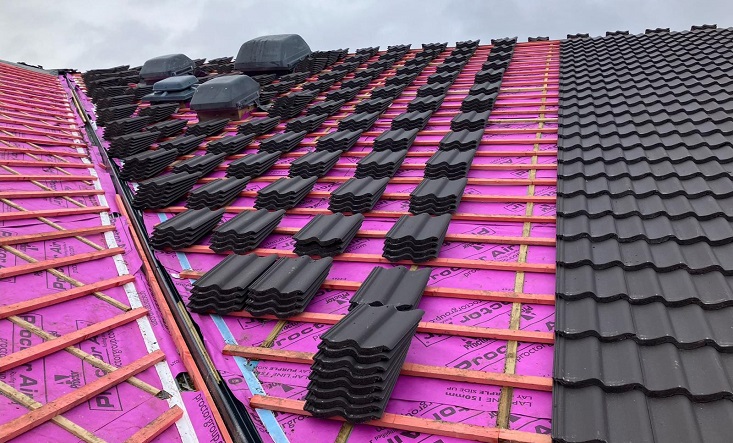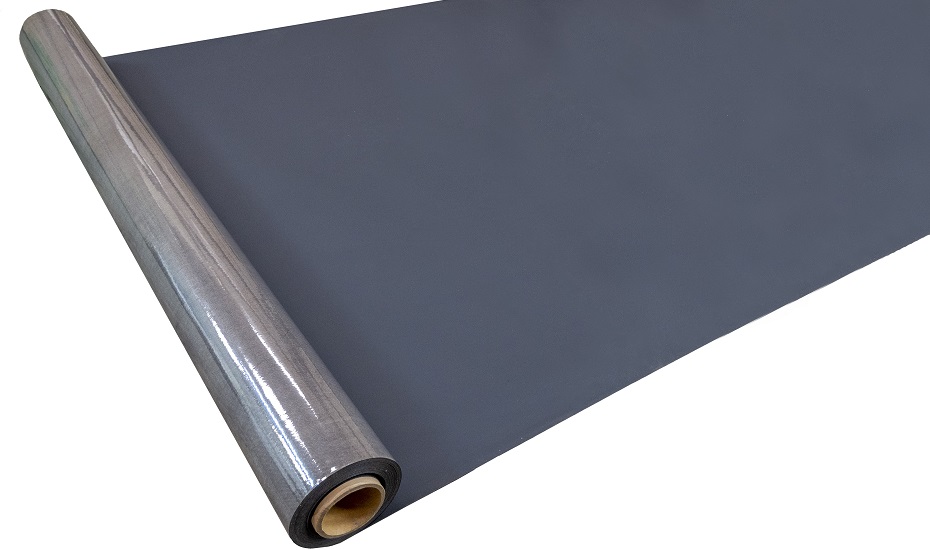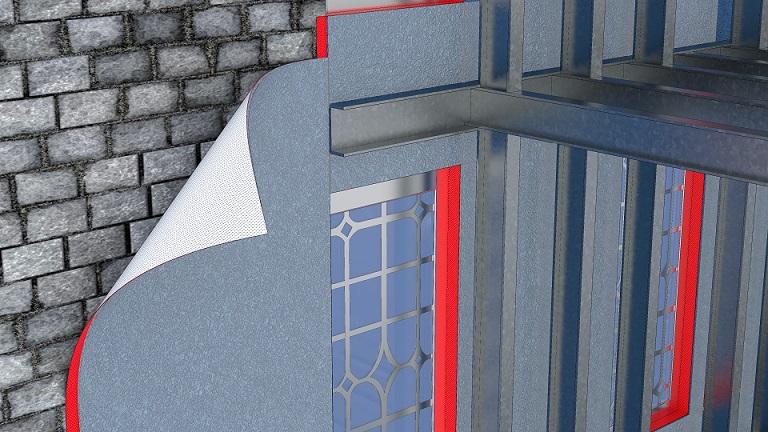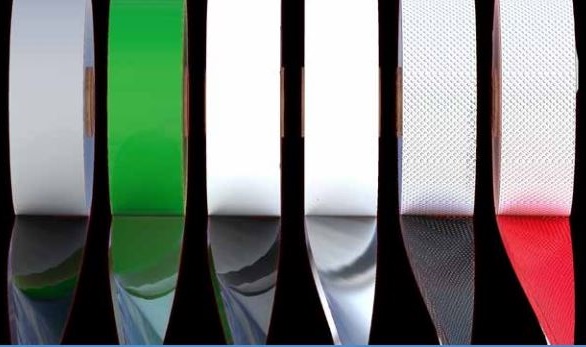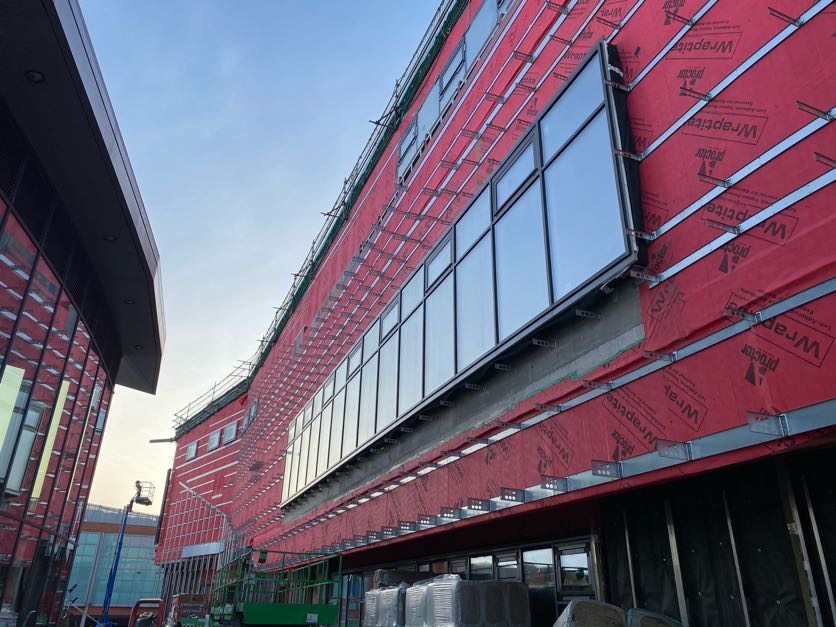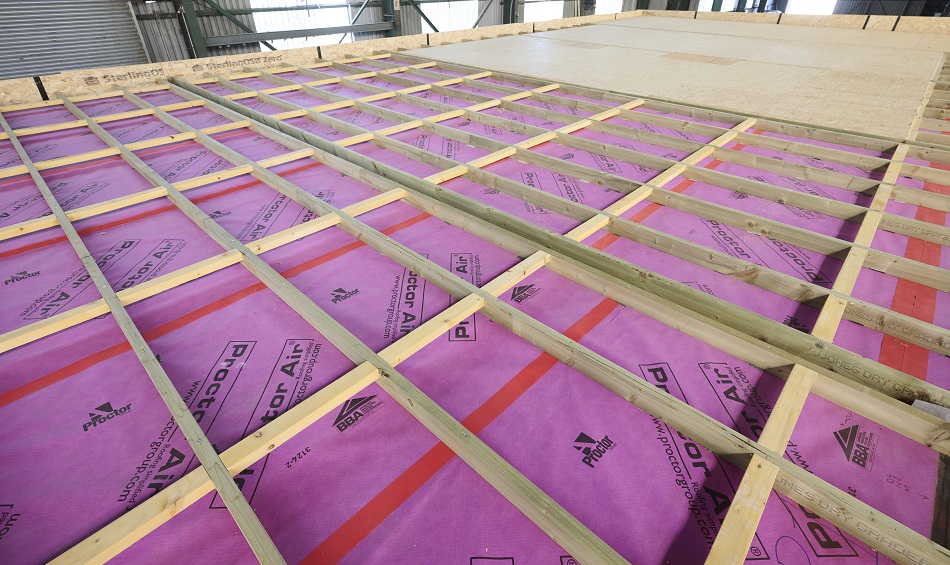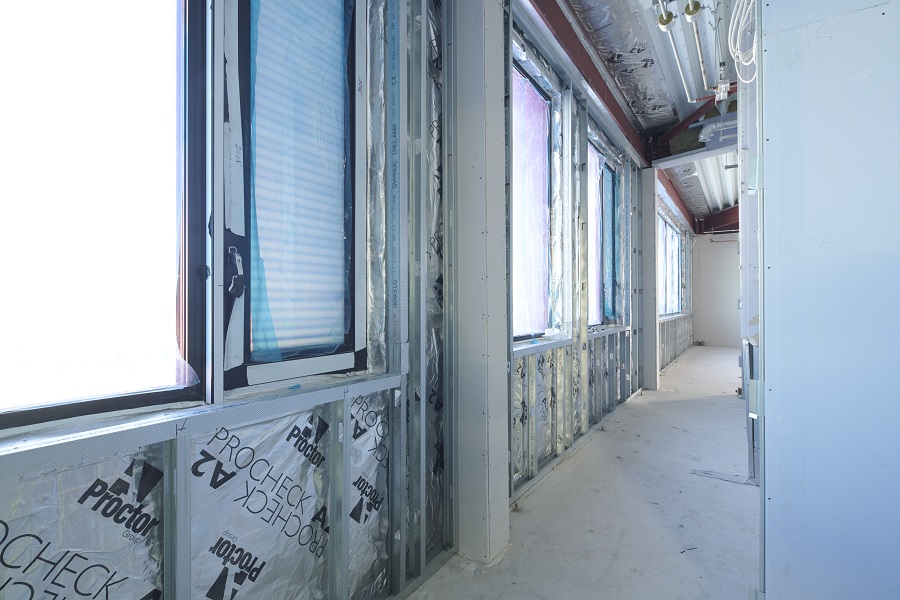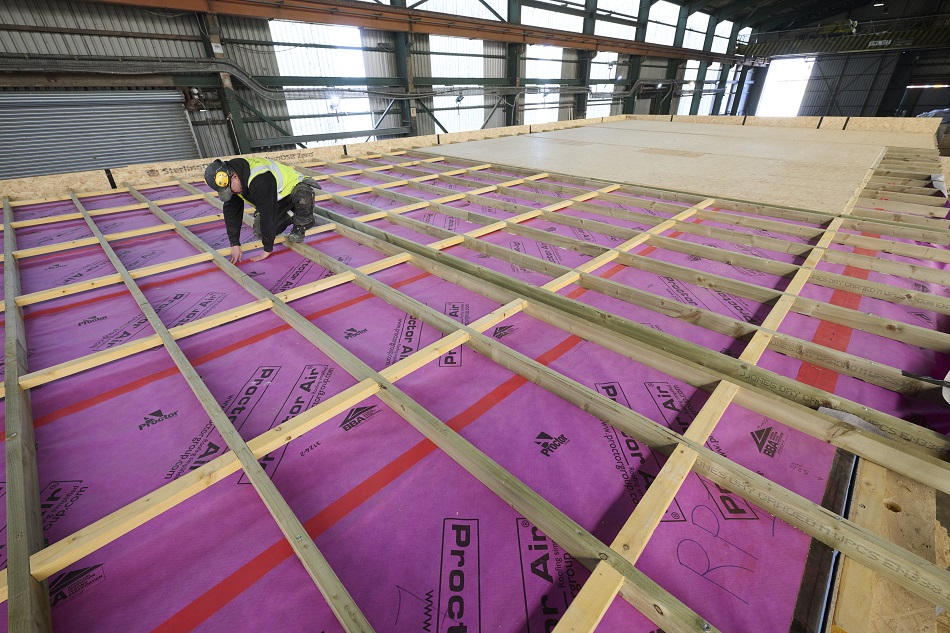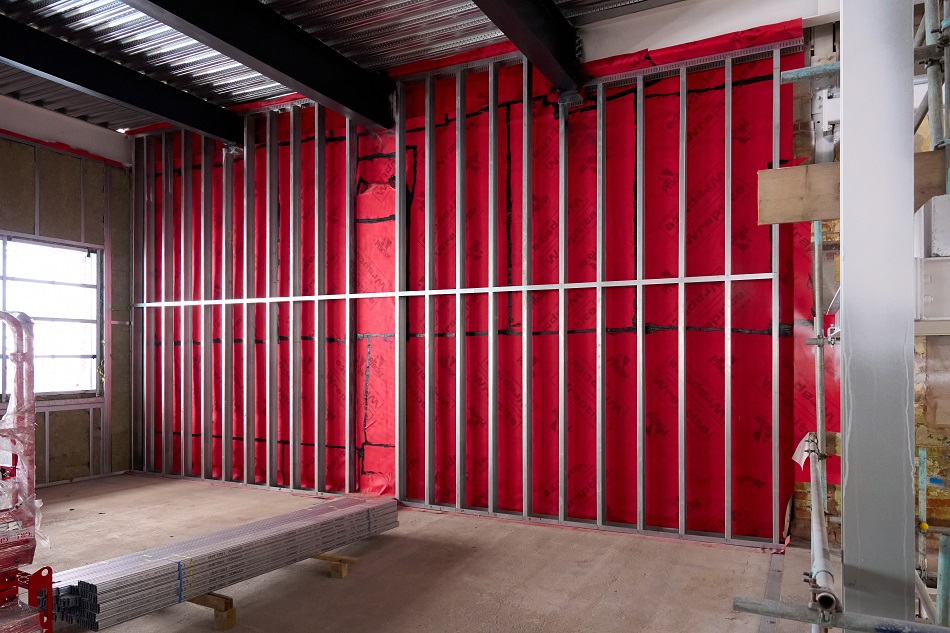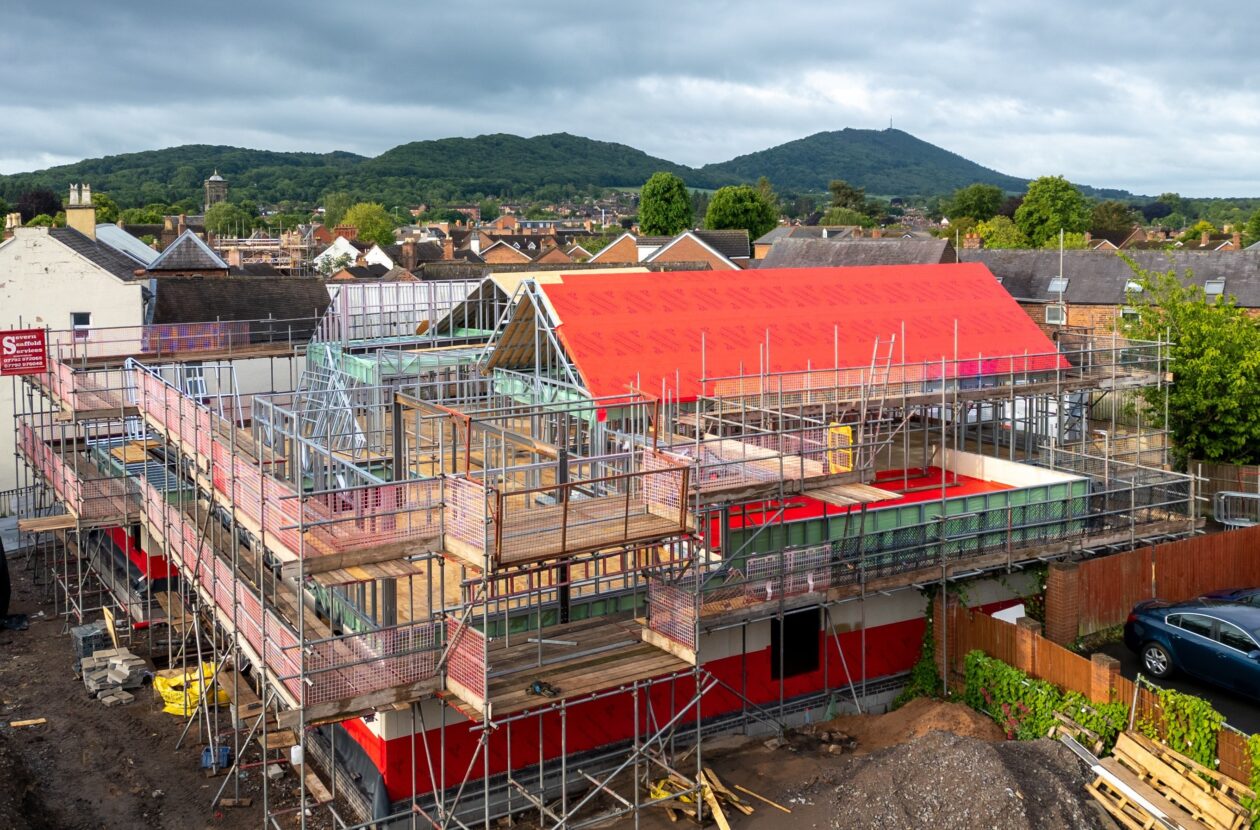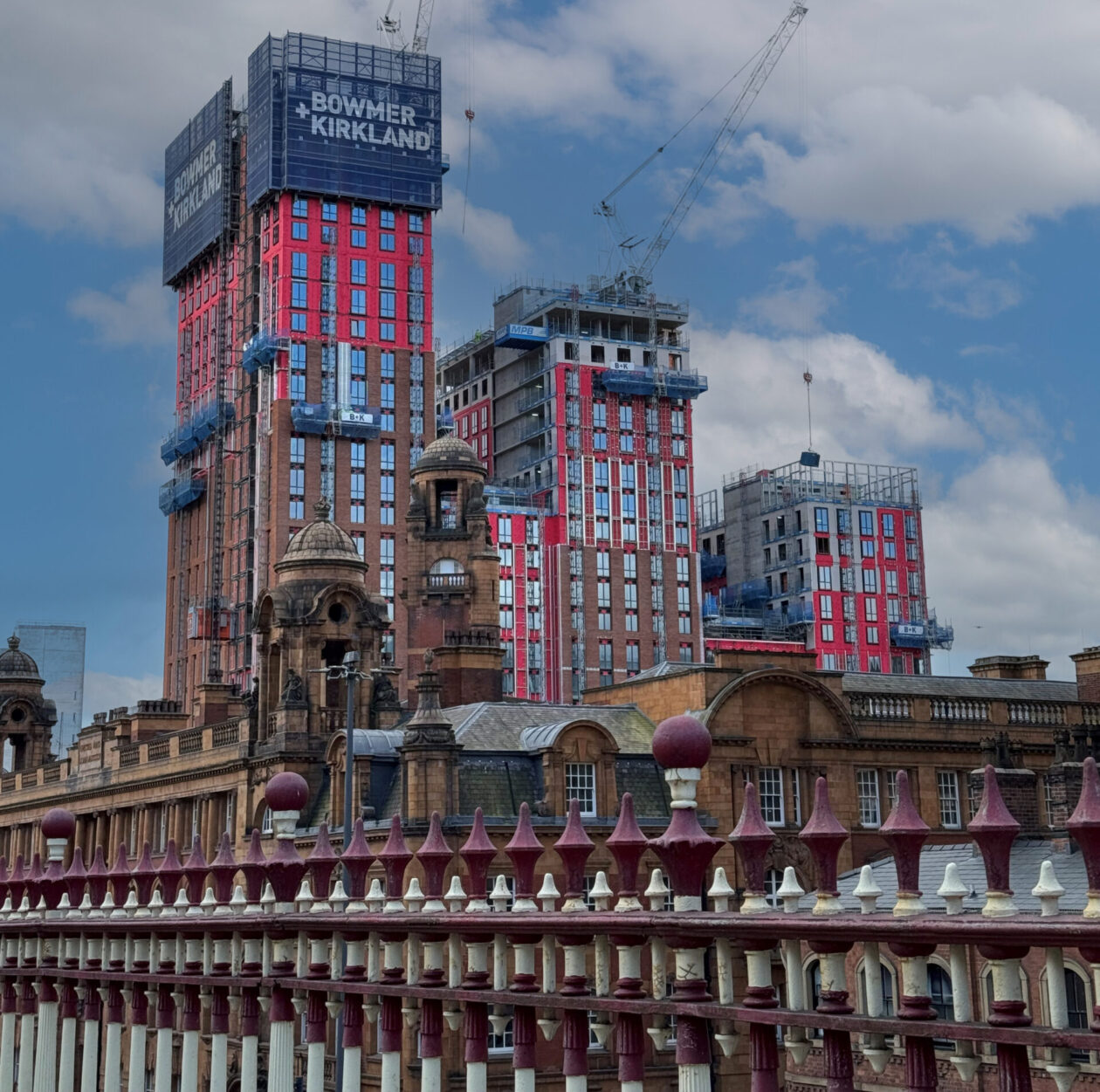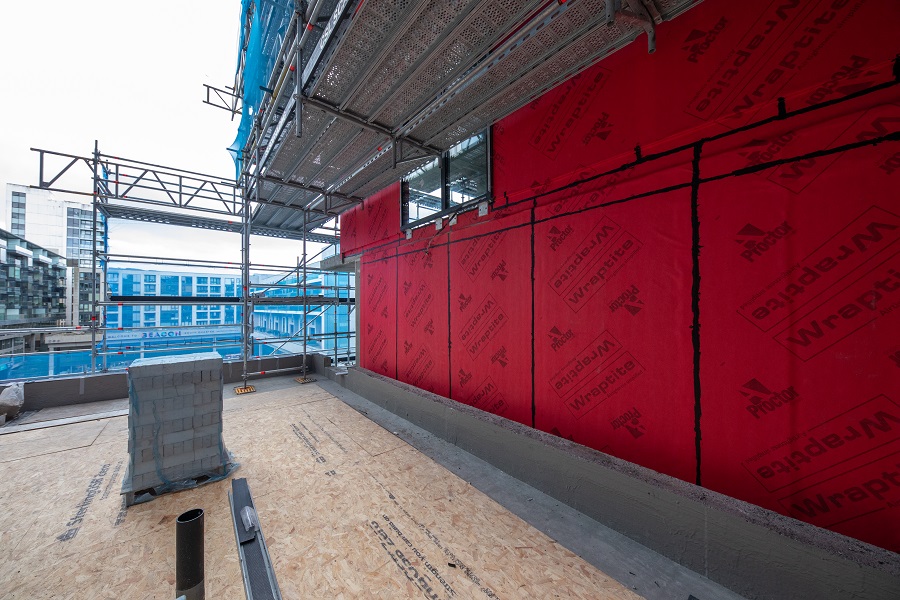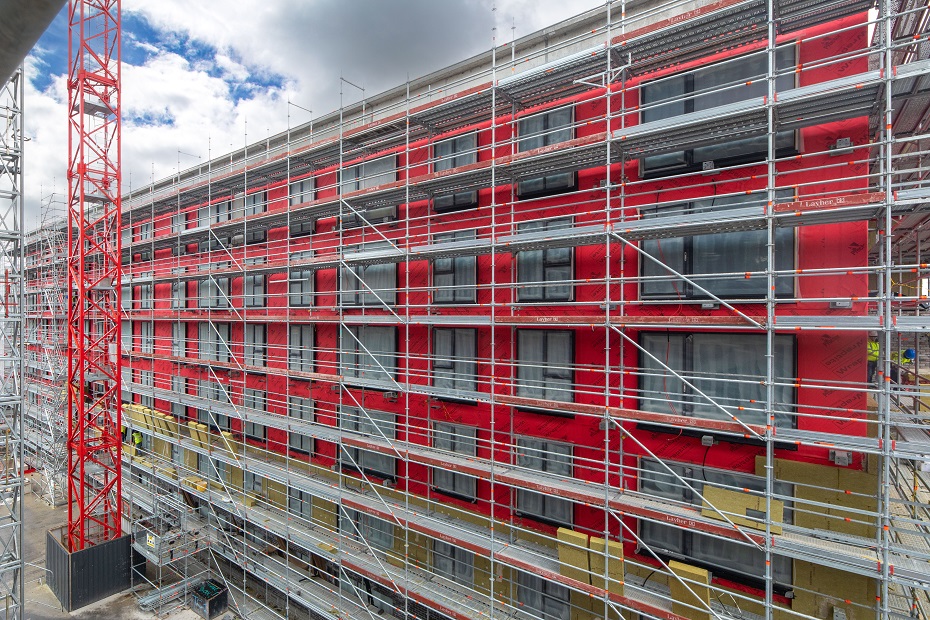For example, when a ‘standardised’ solution turns out to have no two panels or modules the same, it’s little wonder that alternatives to traditional construction struggle to gain a foothold. People don’t see the benefit, because the benefits can’t be realised.
At Proctor Group, we advocate for alternatives to traditional site-based construction because we consistently see them produce the results they promise. Scotland has a very well-developed timber frame industry with a proven track record, but the evidence is not just local. We work with customers around the globe who put offsite and modular solutions into practice every day.
The benefits of offsite in action
In the Highlands, north of Inverness, the new £45 million Tain Campus features two Proctor Group products in the external wall build-up. The Wraptite® external air barrier system was used to the outside of the Metsec framing system, while Procheck® A2 was installed on the internal side.
The membranes were installed by Veitchi Interiors, who put forward a proposal to the client and main contractor that the Wraptite be pre-applied in the company’s Metframe panel factory. Both were happy to explore the idea.
While the pre-application put extra pressure on the transport of the finished panels, it also meant the external air barrier didn’t need to be installed on site. This was a tremendous benefit in such a northerly location which was also on the coast. The only work needed on site was the application of tapes, where required, to fully seal the system against wind and rain.
For a project aiming to achieve Passivhaus certification, the extra certainty gained from carrying out more of the wall panel production offsite was incredibly valuable.
Can a vapour permeable membrane be pre-applied to sheathing boards?
Manufacturing whole panels to various levels of completion – maybe to the external airtightness line, or maybe even all the way out to the cladding – is one way to take advantage of offsite techniques.
Recently, however, the Proctor Group technical team has received queries asking about pre-applying Wraptite to individual sheathing boards. The sheathing board is then installed onto the structural frame as normal.
Some manufacturers have even begun to offer sheathing boards with pre-applied membrane, as a time-saving measure.
At face value, this idea would seem to fit with the potential benefits that offsite can provide. It removes a site-based process, taking variables like weather out of the equation, and it provides added reassurance that the work has been carried out to the manufacturing facility’s quality standards.
There’s no doubt that it’s a viable option. But is it a worthwhile option?
In our opinion, no.
Sheathing boards with a pre-applied membrane still have to be mechanically fixed to the frame. The fasteners used to attach the panels therefore penetrate the membrane, creating potential points for air and moisture leakage across the entire facade.
This is entirely contrary to the reasoning behind specifying the membrane in the first place. An external air barrier like Wraptite delivers the best results when the number of membrane penetrations is kept to a minimum. The more penetrations introduced, the greater the risk of compromising the air and moisture tightness of the building envelope.
Alongside having to try and achieve a robust seal around every mechanical fixing, every single board joint needs to be taped.
A pre-applied membrane on a panel system also needs to be taped, but the larger format of a wall panel compared to individual sheathing boards drastically reduces the number and overall length of joints that need to be sealed.
Sealing fastener penetrations with tape or patches, and taping every joint between sheathing boards, adds labour and cost, and increases the potential for errors to occur. By contrast, on-site membrane application allows penetrations to be planned more easily, minimised, and then sealed in a controlled sequence.
Offsite construction, as part of a wider adoption of MMC, has the potential to transform the construction industry and deliver buildings that exceed the expectations of the people who use them. For that transformation to happen, however, new solutions must be used for the right reasons and in the right way.
When it comes to vapour permeable membranes providing an external airtightness line, traditional on-site installation offers a more adaptable, reliable and durable solution.
About Wraptite
Wraptite is both airtight and highly vapour permeable, helping to achieve high standards of airtightness without increasing condensation risk in the structure. Its self-adhered installation is designed to ensure a consistent airtight external seal, contributing to its accreditation as a Passivhaus-certified component.
Find out more about Wraptite: https://proctorgroup.com/products/wraptite
Find out more about getting the best from self-adhesive vapour permeable membranes: https://proctorgroup.com/articles/permeability-of-self-adhesive-membranes-faqs
Request a Sample
Technical Advice
CAD Detail Review
U-Value Calculation
Book a CPD
Specification Check
